In the USA
Is American democracy backsliding?
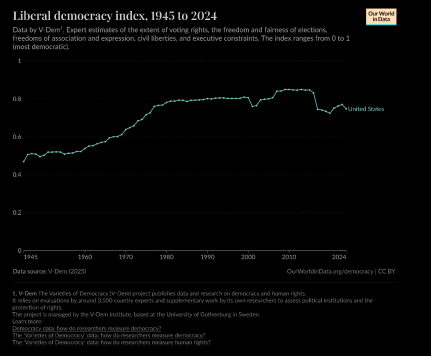 Reached its best condition in about 2010 and didn’t degrade much from then.
Reached its best condition in about 2010 and didn’t degrade much from then.
Quality of American democracy in datasets
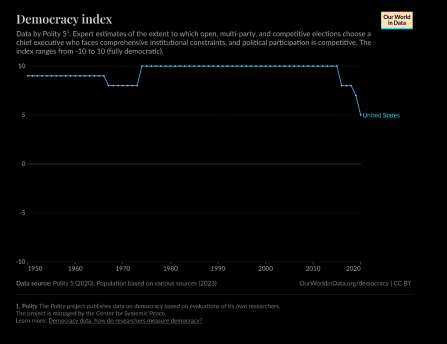 But in other datasets the change is much more important. E.g. here in the Polity Project they don’t care much about the civil rights movement but have focused much more on the recent decline.
But in other datasets the change is much more important. E.g. here in the Polity Project they don’t care much about the civil rights movement but have focused much more on the recent decline.
Indicators of backsliding in the US
Executive Aggrandisement
Three indicators according to Bermeo last week:
- Reduce competencies of parliaments, increase those of the executive.
- Weaken courts or increase government control over them.
- Increase government control over the media. Carrier/Carothers use slightly different terminology but make the same points:
- They combine (1) and (2) into something they call: Making the Executive Branch Dominant Over Other Parts of Government.
- They have a separate category called Establishing the President as Supreme Within the Executive Branch, which Bermeo includes in (1).
- Their concept of (3) is a bit broader: Weakening Societal Constraints on Executive Power.
Increase power of the executive
Carrier/Carothers:
- Trump’s team seeks an extreme form of presidential concentration of power within the executive branch. It has:
- Weakened accountability institutions and regulations.
- Tightened presidential control over independent agencies and the executive bureaucracy.
- Decreased the political independence of the civil service.
- More political jobs (even in lower ranks) in the USA than in other countries, but Trump takes it even further. As such people aren’t selected by merit but political alignment.
- Purged perceived opponents from the branch. Unitary executive theory is a theory that advocates for the control of the president over all the parts of the executive.
Congress
Carrier/Carothers:
- Congress is allowing the Trump administration to sideline its authority.
- Administration repeatedly bypassed congressional power of the purse.
- Administration withheld existing congressionally allocated money. ⇒ Current shutdown debate: What guarantees do Democrats have that executive will actually follow through any compromise?
- Since he challenges the parliament constantly, how to get out of the shutdown if there is no built trust?
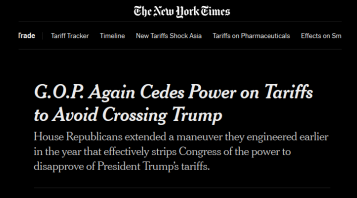 Trump uses executives orders and the trick of not using the budget that is allocated to challenge the spending decisions of the parliament.
Trump uses executives orders and the trick of not using the budget that is allocated to challenge the spending decisions of the parliament.
Weaken courts? Get them in line?
 He loses many cases but the Supreme Court has granted him immunity and limited universal injunctions which greatly benefit him in cases such as university funding cuts.
He loses many cases but the Supreme Court has granted him immunity and limited universal injunctions which greatly benefit him in cases such as university funding cuts.
The Supreme Court’s shadow docket
- The Supreme Court’s shadow docket consists of applications seeking immediate action from the court. Unlike the merits docket, these cases are handled on an expedited basis with limited briefing and typically no oral argument, and the court often resolves them in unsigned orders with little or no explanation.
- There was a notable growth in matters decided by the court on its shadow docket. In the 2023-24 term, there were 44 matters on the shadow docket. In the 2024-25 term, through June 27, there were 113 matters.
- Sometimes the court doesn’t solve a case immediately and gives Trump a decision that benefits him in the meantime basically.
Control of the media

 He is back on air, but the chilling effect of this measure is already done. The media will know think twice before criticising Trump.
He is back on air, but the chilling effect of this measure is already done. The media will know think twice before criticising Trump.
Weaponising the state
Carrier/Carothers: He has undermined the independence of executive branch prosecutors, weakening institutional protections for them, launching a Justice Department “Weaponisation Working Group” to probe their activities, and taking retributive actions against some prosecutors who criticised or had participated in investigations into Trump.
Investigating and prosecuting rivals
 Not covered enough by the media, he just does it in the open. It’s not normal in a democracy for a prosecutor to be recommended to drop a case so as to not be attacked by the state.
Not covered enough by the media, he just does it in the open. It’s not normal in a democracy for a prosecutor to be recommended to drop a case so as to not be attacked by the state.
Tariff policy as weapon
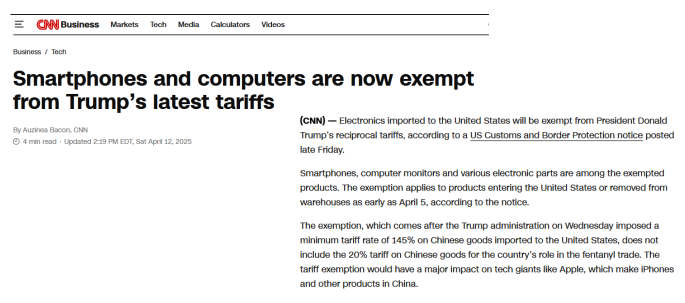 He can exempt those that he wants to protect and attack those that he wants to destroy, his motivations may however not always be clear.
He can exempt those that he wants to protect and attack those that he wants to destroy, his motivations may however not always be clear.
University
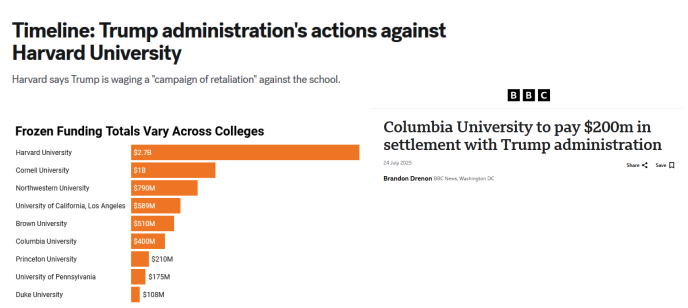 Budget cuts let him influence the hiring process, admission conditions, etc… of the universities.
Budget cuts let him influence the hiring process, admission conditions, etc… of the universities.
Strategic election manipulation
He can’t do as much here because states administrate elections, even if he told the commissionner of Georgia to find the necessary votes for him during the election that he lost.
Carrier/Carothers: The administration is asserting authority over state-run elections and weakening voting rights and election protections.
- Issued an executive order requiring proof of citizenship to vote.
- Directed the Department of Homeland Security to review each state’s voter registration lists.
- Mandated that changes be made to state-level mail-in ballot practices.
Gerrymandering
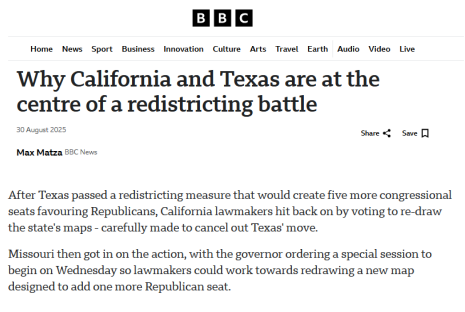
- Congressional districts are drawn by the states.
- This invites abuse:
- Create few districts with as many voters of your opponent as possible (“Packing”).
- Create many districts in which you have a small but solid advantage (“Cracking”).
- The original gerrymander is from Massachussets:
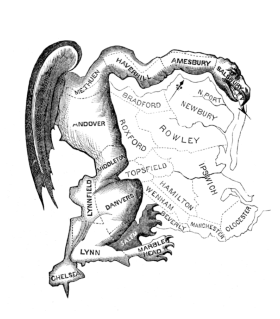
Going beyond backsliding?
Backsliding analyses usually view Competitive Authoritarianism as the endpoint of backsliding. Carrier/Carothers:
- Some believe that the United States is on the verge of losing its liberal democracy altogether and has already in fact slipped into the category of what political scientists have come to call competitive authoritarian regimes. Others are more optimistic. They contend that America’s democratic institutions and federal system, while under serious pressure, are proving largely resilient to autocratic takeover and that U.S. democracy will survive. Levitsky/Way (background reading):
- The breakdown of democracy in the United States will not give rise to a classic dictatorship in which elections are a sham and the opposition is locked up, exiled, or killed. Even in a worst-case scenario, Trump will not be able to rewrite the Constitution or overturn the constitutional order… There will be elections in 2028, and Republicans could lose them… But authoritarianism does not require the destruction of the constitutional order. What lies ahead is not fascist or single-party dictatorship but competitive authoritarianism—a system in which parties compete in elections but the incumbent’s abuse of power tilts the playing field against the opposition. When we select all the examples that fit democratic backsliding and not those that go against it we risk becoming too pessimistic, the reverse could be done as well. We shouldn’t ignore public opinion either, the information can point in both directions. On another note, it’s important not to be unable to see further than democratic backsliding. Competitive authoritarianism is a risk, and this attack has been specially fast (Trump is old and has a term limit) compared to other cases such as Hungary.
It is also difficult to fit the use of violence and the military into backsliding, as Trump uses the National Guard. This is quite distinct from other cases like Turkey. Let’s drop the confirmation bias on either direction, we can’t be too positive nor negative. It doesn’t look like Trump constraints himself like other competitive authoritarians (not saying he is right now) as if he though he will be in the opposition ever again. This can mean several things.
The comparative perspective
- The details of different backsliding attempts depend on the institutional structure of the country.
- In parliamentary systems, the government controls a majority in parliament (India example, p. 16-17). It is thus less necessary to weaken the parliament.
- This might not be the case for Trump soon.
- Some presidential systems already operate with the assumption that the president controls the executive (Ecuador example, p. 16). It is thus not necessary to assert this control.
- More on such differences in the next two weeks.
Causes for the crisis of American democracy
Presidentialism
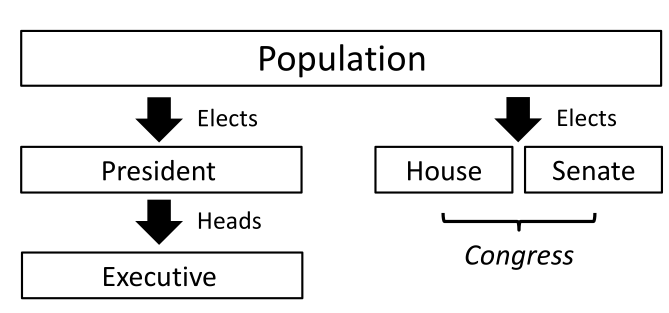 The US a really atypical case:
The US a really atypical case:
- Pure two-party system with divided government
- In British case, no divided government
- In Latin American case, multiparty system.
 This system is very favorable to affective polarisation.
This system is very favorable to affective polarisation.
Why is the two-party system so stable?
- Americans are extremely unhappy with their political system.
- And yet, all third party attempts regularly fail.
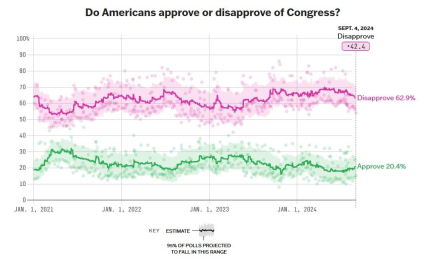
- While partisanship has become very important, the parties themselves remain very weak:
- Primary system, allows rise of outsiders that strong parties would block
- Basically no national organisation, “presidentialisation of parties”.
- Huge independence of directly elected Representatives and Senators
- Used to be a basis for compromise, when there were many Democrats from conservative districts/Republicans from liberal districts.
- Now the basis for a transformation of the Republican party.
The increasing nationalisation of politics
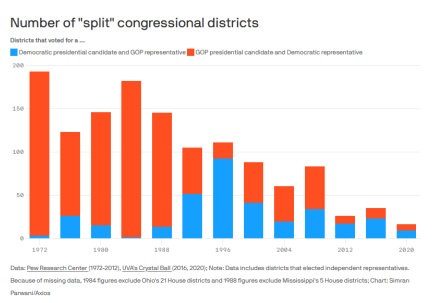
Affective polarisation

The Republican party’s defection from democracy
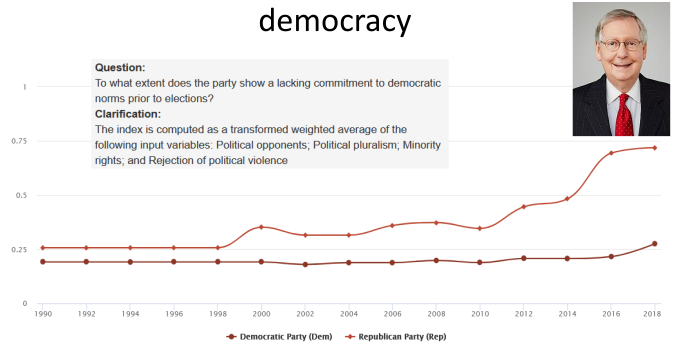 They don’t accept that the other side is able to make decisions and govern. According to the US constitution, the president nominates a new judge to the Supreme Court which then needs to be confirmed by the Senate.
They don’t accept that the other side is able to make decisions and govern. According to the US constitution, the president nominates a new judge to the Supreme Court which then needs to be confirmed by the Senate.
- On February 13, 2016, Justice Antonin Scalia died.
- President at the time was Barack Obama, who would leave office in January 2017.
- On March 16, 2016, Obama nominated Merrick Garland.
- The Senate’s Republican majority refused to consider the nomination on the pretext that it was during an election year.
- In April 2017, the Senate confirmed Neil Gorsuch, Trump’s candidate for the seat.
- In September 2020, Justice Ruth Bader Ginsburg died.
- Republicans had no problems at all to confirm Amy Coney Barrett, Trump’s candidate for the seat, on October 26, just one week before the election.
What do to about it?
If democratic actors are confronted with norm-violations by their opponents, how should they react?
- Should they play tit-for-tat, that is, retaliate and do not feel bound by these norms either?
- Or should they rather insist on the importance of these norms and follow them very explicitly?